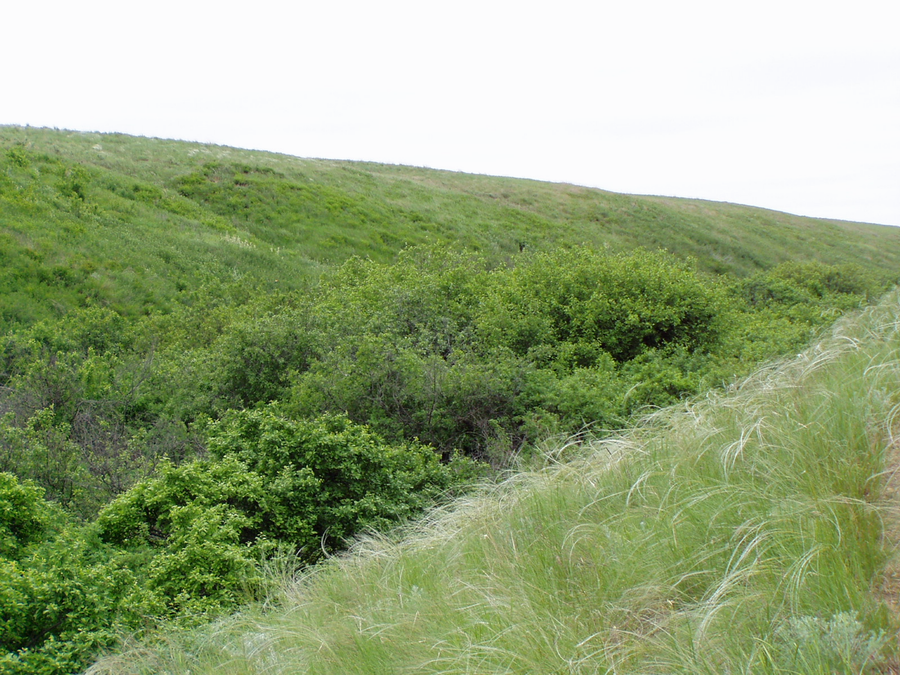
The article was co-authored by Yu.D. Nukhimovskaya, an employee of the IEE RAS.
A century-old history of the development of the largest mesophilic ravine-gully community in the clayey Trans-Volga region on the northwestern coast of Lake Elton has been analyzed. It is shown that modern polydominant tree and shrub communities of the gully are the result of anthropogenic degradation of a ravine forest area. The stages of development of polydominant plantations associated with changes in the intensity of pasture load have been identified. The mechanisms of resistance of polydominant communities to grazing and fires and the conditions for the preservation and reproduction of such communities have been considered. It is shown that a closed massif of a polydominant community is resistant to fire and is restored in several years. However, as a result of grazing, it breaks up into fragments. Herbal vegetation penetrates into the plantation, rags and dead wood accumulate. In a fire, the litter burns out to the mineral layer, and most of the regeneration buds buried in the soil die. Rapid and massive coppice recovery does not occur, and the succession process stretches over decades. Under such conditions, with continued grazing and repeated fire, severe soil erosion may develop, leading to irreversible disturbances of the original habitats and, consequently, to the impossibility of restoration of the polydominant community.
It is noted that seed renewal of trees and shrubs in existing and new emerging habitats, according to soil and plant conditions suitable for the growth of polydominant plantations, is difficult due to the lack of moisture and competition with herbaceous vegetation. In a changing climate, the restoration of lost tree and shrub communities will significantly increase the ecological capacity of the territory, ensure the preservation and restoration of the abundance of many forest and dendrophilic species of vertebrates, and can serve as an alternative to artificial afforestation on a treeless plain.
Detailed information about the article: - https://elibrary.ru/item.asp?id=46198450
